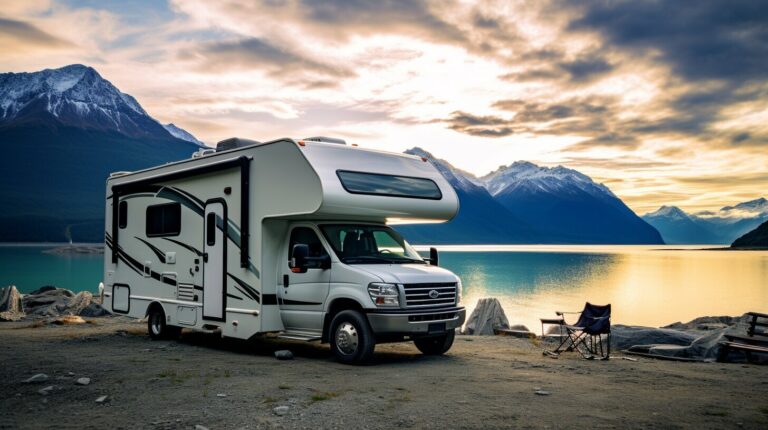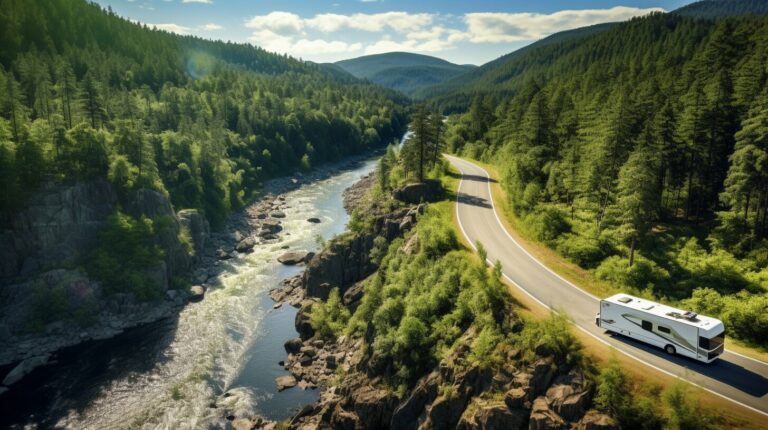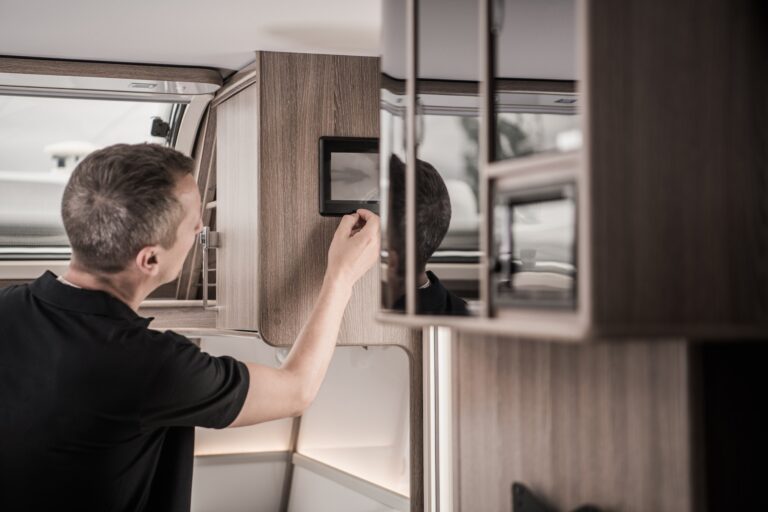As the summer season comes to a close and the temperature starts to drop, it’s time to start thinking about winterizing your RV. Properly preparing your RV for cold weather is crucial in ensuring its longevity, protecting your investment, and maintaining a comfortable living space during the colder months. In this comprehensive guide, we’ll cover the essential steps to winterize your RV, as well as tips and tricks for making the process easier and more effective.
Why Winterize Your RV?
Winterizing your RV is essential for several reasons:
- Preventing damage: Freezing temperatures can cause damage to your RV’s water system, leading to costly repairs. Winterizing helps protect your RV’s plumbing and appliances from freezing and bursting.
- Maintaining comfort: Proper winterization ensures that your RV stays warm and cozy during the cold months, making it a more comfortable living space.
- Saving energy: A well-insulated RV requires less energy to heat, which can save you money on fuel costs and reduce your environmental impact.
- Preserving your investment: Winterizing your RV is an essential part of regular maintenance that helps protect its value and prolong its lifespan.
- Safety: Properly winterizing your RV can prevent dangerous situations such as carbon monoxide buildup from a poorly ventilated furnace or propane leaks from damaged gas lines.
With these benefits in mind, let’s dive into the steps you need to take to winterize your RV effectively.
Essential Steps for Winterizing Your RV
Winterizing your RV involves several key steps to ensure your rig is ready to face the cold weather and protect it from potential damage. Here’s a step-by-step guide to winterizing your RV:
1. Drain and Clean the Water System
Before the temperatures drop below freezing, it’s essential to drain and clean your RV’s water system to prevent damage from frozen pipes and tanks. Follow these steps:
- Drain the fresh water tank: Locate the fresh water tank drain valve and open it to release all the water from the tank. Close the valve once the tank is empty.
- Drain the water heater: Turn off the water heater and allow it to cool completely. Locate the water heater’s drain plug and remove it to empty the tank. Remember to open the pressure relief valve to release any built-up pressure.
- Drain the gray and black water tanks: Empty the gray and black water tanks at an appropriate dump station. Flush the black water tank thoroughly to remove any residual waste.
- Bypass the water heater: Install a water heater bypass kit if your RV doesn’t already have one. This prevents antifreeze from entering the water heater during the winterization process.
- Drain water lines: Open all faucets, including the showerhead and the toilet, to release any remaining water from the plumbing system. Use an air compressor to blow out the water lines if necessary.
2. Add RV Antifreeze
After draining and cleaning the water system, it’s time to add RV antifreeze to protect your plumbing from freezing temperatures. Follow these steps:
- Choose the right antifreeze: Make sure to use non-toxic RV antifreeze specifically designed for RV plumbing systems. Do not use automotive antifreeze, as it is toxic and can damage your RV’s water system.
- Pour antifreeze into the fresh water tank: Add the recommended amount of antifreeze to your fresh water tank, typically around 2-3 gallons for an average-sized RV.
- Pump antifreeze through the plumbing system: Turn on your water pump and open all faucets, one at a time, until you see the antifreeze flowing out. Don’t forget the showerhead, toilet, and any outdoor faucets.
- Fill P-traps and toilet bowl: Pour a small amount of antifreeze into each drain and the toilet bowl to protect the P-traps and seals from freezing.
3. Inspect and Seal Exterior
Inspecting the exterior of your RV and sealing any gaps or cracks is essential to prevent drafts, moisture, and pests from entering your RV during the winter months. Follow these steps:
- Inspect the roof: Check for any damage, cracks, or gaps in the roof sealant or material. Repair or reseal as necessary using appropriate sealants or patches.
- Seal windows and doors: Inspect the seals around your RV’s windows and doors. Replace or repair any damaged seals to prevent drafts and moisture infiltration.
- Check vents and openings: Inspect all exterior vents and openings, such as the refrigerator vent, furnace vent, and plumbing vent, for damage or gaps. Repair or seal as needed.
4. Insulate Your RV
Proper insulation helps keep your RV warm during the winter months and reduces your heating costs. Follow these steps to insulate your RV effectively:
- Insulate windows: Add thermal curtainsor use insulated window covers to minimize heat loss through windows.
- Seal and insulate vents: Cover roof vents with insulated vent covers and use foam pipe insulation to wrap exposed plumbing lines.
- Insulate the underbelly: Add insulation to the RV’s underbelly if it’s not already insulated, or consider upgrading to higher R-value insulation for better thermal performance.
- Add weatherstripping: Apply weatherstripping around windows, doors, and other openings to create a tight seal and prevent drafts.
- Use draft stoppers: Place draft stoppers or door sweeps on doors to prevent cold air from entering your RV.
5. Prepare Your RV’s Appliances and Systems
Before the cold weather sets in, it’s essential to prepare your RV’s appliances and systems for winter use. Follow these steps:
- Check your furnace: Inspect your RV’s furnace and make sure it’s clean and functioning properly. Replace the furnace filter, if necessary, and schedule any needed maintenance or repairs.
- Test your propane system: Inspect your propane system for leaks and ensure all connections are tight. Test your propane appliances to make sure they’re functioning correctly.
- Inspect your batteries: Check the condition of your RV’s batteries and ensure they’re fully charged. Clean any corrosion on the battery terminals and top off the electrolyte levels, if needed. Consider upgrading to AGM or lithium batteries for better cold-weather performance.
- Switch to LED lighting: Replace incandescent light bulbs with energy-efficient LED bulbs to reduce energy consumption and increase the life of your batteries.
Additional Winterization Tips
Here are some extra tips to help make your RV winterization process smoother and more effective:
- Create a winterization checklist: Make a list of all the items you need to complete for your specific RV and use it to stay organized and ensure you don’t miss any essential steps.
- Invest in quality RV covers: Use high-quality RV covers to protect your RV’s exterior and tires from harsh winter elements, such as snow, ice, and UV rays.
- Monitor indoor humidity: Keep an eye on your RV’s indoor humidity levels during the winter months and use a dehumidifier, if necessary, to prevent condensation and mold issues.
- Maintain your RV’s interior: Clean and declutter your RV’s interior before winter and install moisture-absorbing products like DampRid to prevent mold and mildew.
In Conclusion
Properly winterizing your RV is crucial for protecting your investment, maintaining a comfortable living space, and ensuring your rig is ready for your next adventure. By following this comprehensive guide, you can be confident that your RV is well-prepared for the cold weather ahead. Remember to create a winterization checklist tailored to your specific RV and keep up with regular maintenance to ensure your rig stays in great shape year-round.






